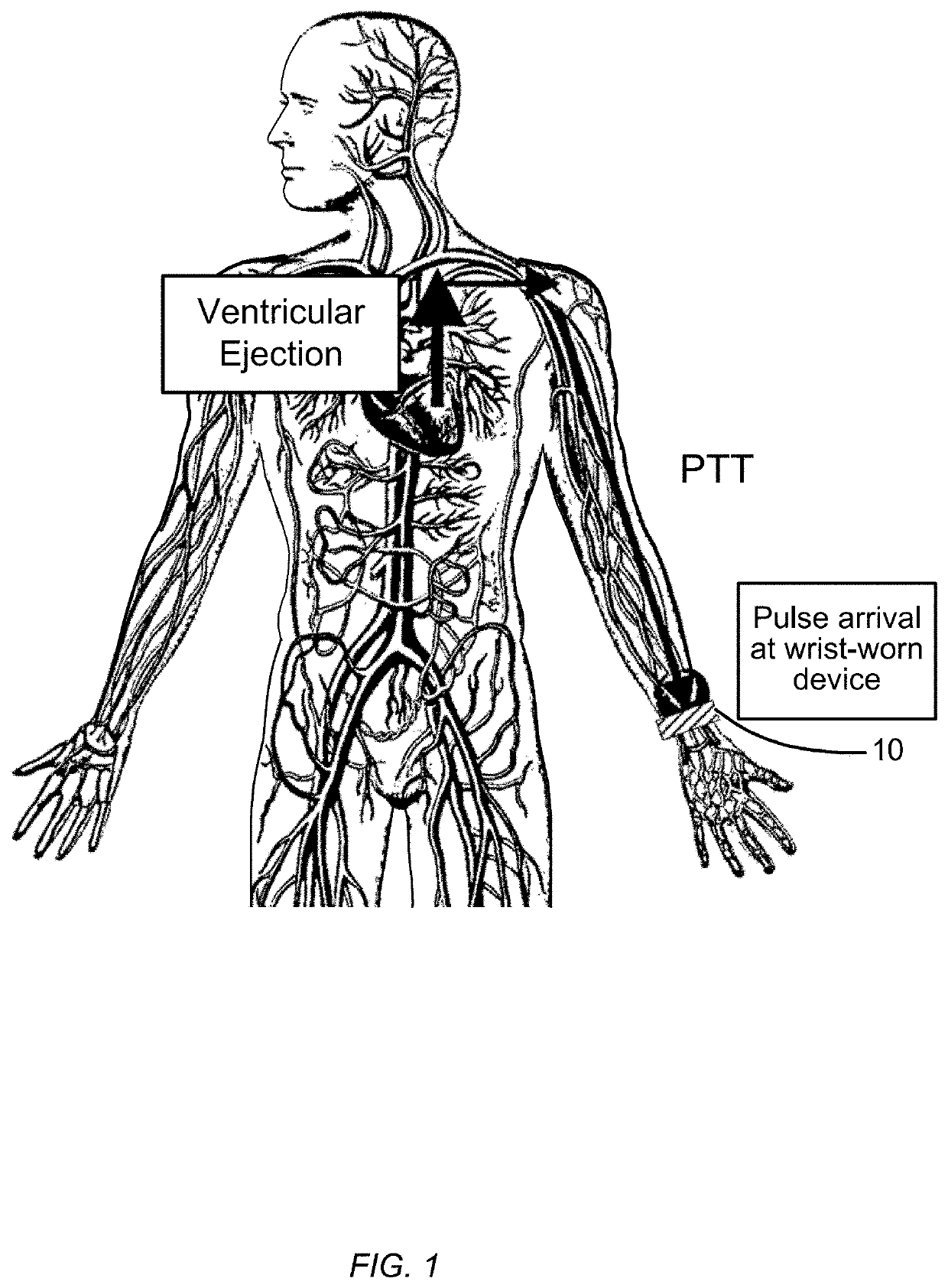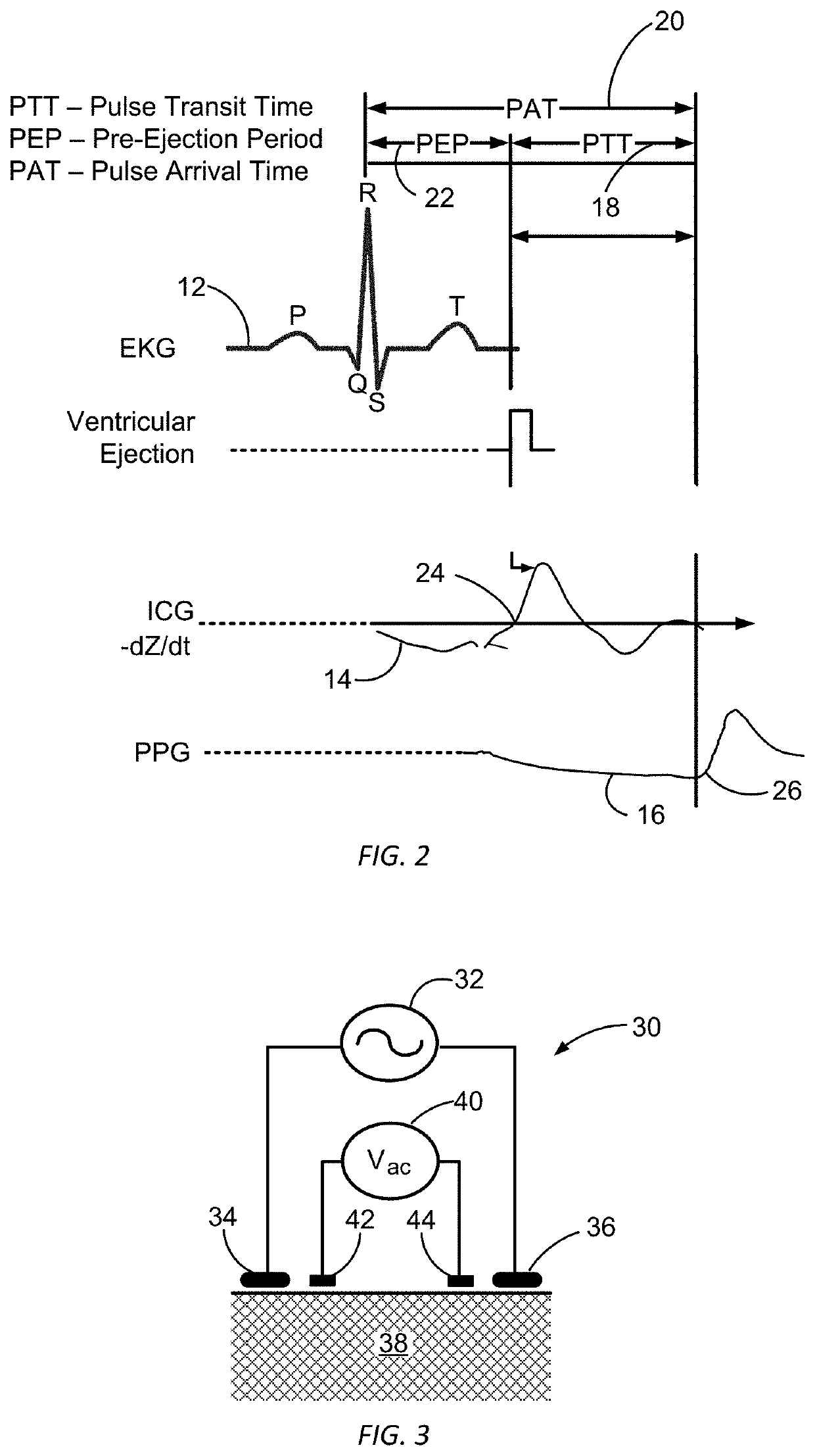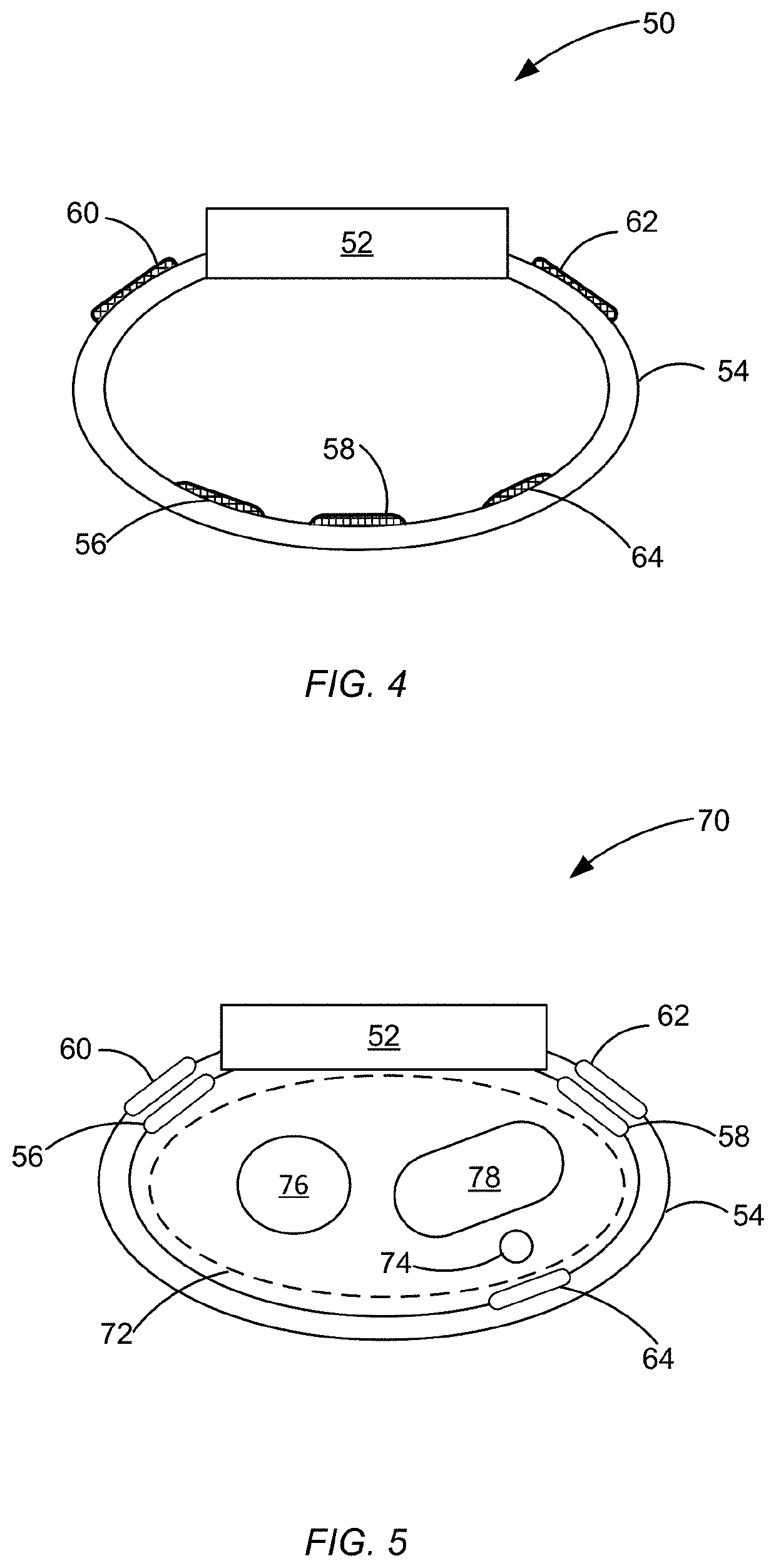Blood pressure monitoring using a multi-function wrist-worn device
a wrist-worn device and multi-functional technology, applied in healthcare informatics, medical science, therapy, etc., can solve the problems of insufficient sporadic office blood pressure measurement to detect some forms of hypertension, current ambulatory and home blood pressure measurement approaches, and insufficient continuous blood pressure measurement, etc., to achieve the effect of longer, more accurate and complete data sets
- Summary
- Abstract
- Description
- Claims
- Application Information
AI Technical Summary
Benefits of technology
Problems solved by technology
Method used
Image
Examples
Embodiment Construction
[0073]FIG. 1 illustrates a propagation path of a blood pressure pulse from ejection from the left ventricle of a subject's heart to a wrist on which a wrist-worn blood-pressure measurement device 10 is worn, in accordance with many embodiments. The wrist-worn device 10 is configured to detect when the blood corresponding to the blood pressure pulse is ejected from the left ventricle of a subjects heart and when the blood pressure pulse arrives at the wrist-worn device 10. The wrist-worn device 10 is configured to calculate a pulse transit time (PTT) for the blood pressure pulse for the transit of the blood pressure pulse from the left ventricle to the wrist-worn device 10. The determined PTT is then used to determine one or more blood-pressure values for the subject.
[0074]In general, a PTT is the time it takes for a pulse pressure wave to propagate through a length of a subject's arterial tree. PTT has a nonlinear relationship with blood pressure. Factors that can impact how fast a ...
PUM
 Login to View More
Login to View More Abstract
Description
Claims
Application Information
 Login to View More
Login to View More - R&D
- Intellectual Property
- Life Sciences
- Materials
- Tech Scout
- Unparalleled Data Quality
- Higher Quality Content
- 60% Fewer Hallucinations
Browse by: Latest US Patents, China's latest patents, Technical Efficacy Thesaurus, Application Domain, Technology Topic, Popular Technical Reports.
© 2025 PatSnap. All rights reserved.Legal|Privacy policy|Modern Slavery Act Transparency Statement|Sitemap|About US| Contact US: help@patsnap.com



